Beautiful Plants For Your Interior
Beautiful Plants For Your Interior
Did you know that nearly 35% of households engage in some form of gardening? Whether you’re a seasoned gardener or just starting out, creating the perfect growing space is essential for thriving plants and a harmonious outdoor environment. In this blog, you’ll discover 20 innovative garden layout ideas such as raised bed gardens, vertical gardening, and herb spirals, designed to inspire your own gardening journey and help you maximize your space efficiently.
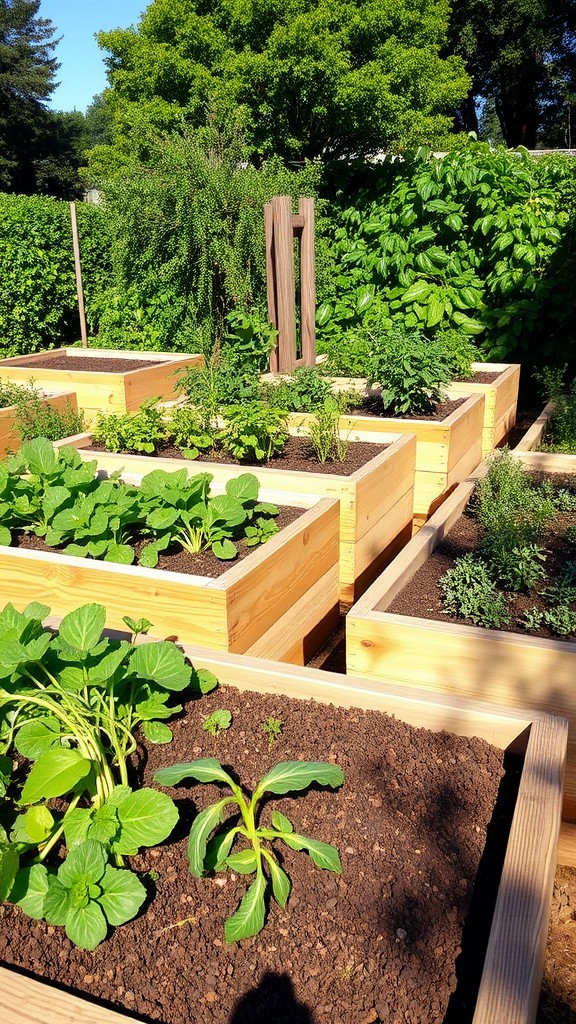
You can transform your garden experience with raised bed gardens. These versatile structures elevate your planting area, providing excellent drainage and easier access for watering, weeding, and harvesting.
Choose durable materials like wood, metal, or composite boards to build your beds. A height of 12-24 inches is ideal for most vegetables. Fill the beds with nutrient-rich soil to support healthy growth. Opt for a square or rectangular shape, allowing for a more organized planting layout.
To maximize your space, practice companion planting by grouping plants that benefit each other, such as tomatoes with basil. This not only promotes healthier crops but also adds density without overcrowding, leading to a bountiful harvest.
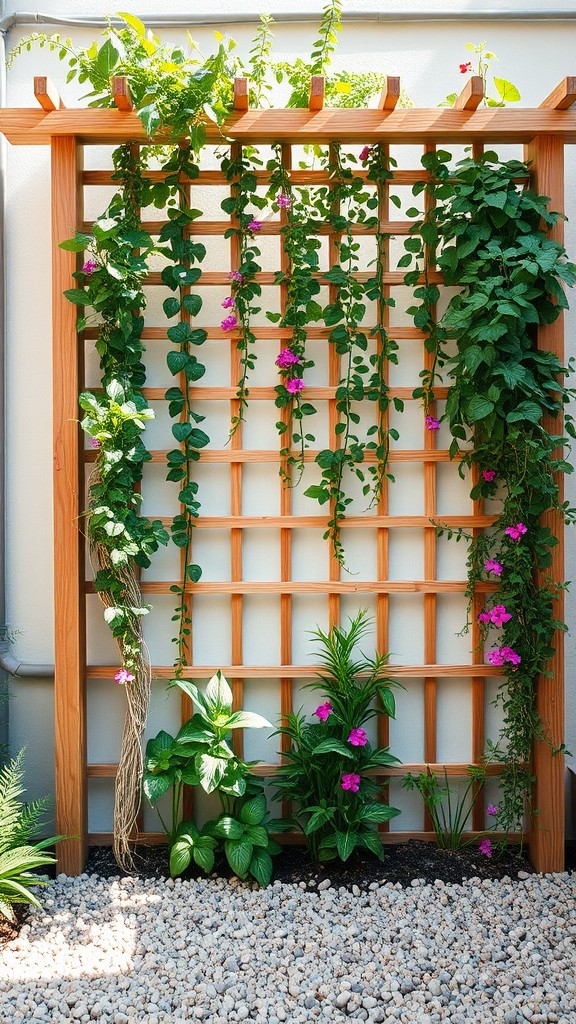
You can transform small spaces into lush green areas with vertical gardening. By using walls, trellises, or even hanging planters, you can maximize your growing area. Choose climbers like peas, beans, or cucumbers that can grow upward, saving valuable ground space.
Start with a sturdy trellis or a wooden pallet mounted on a wall. Fill it with your favorite herbs or flowers for an eye-catching display. For a more compact option, try vertical planters or stacked pots, which can serve as both functional and decorative elements.
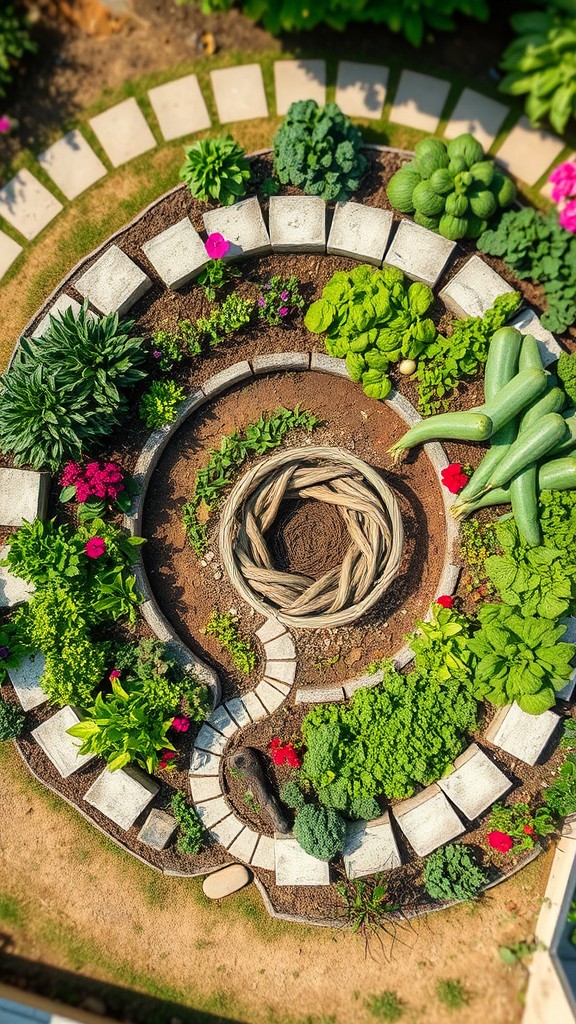
A keyhole garden is a unique, circular raised bed that allows for easy access and efficient space utilization. It is excellent for small areas while encouraging healthy plant growth. The keyhole design typically features a walkable space in the center, allowing you to reach every part of the garden without stepping in it.
To create your own keyhole garden, follow these steps:
With its efficient design, a keyhole garden can improve productivity while making gardening easier and more enjoyable.
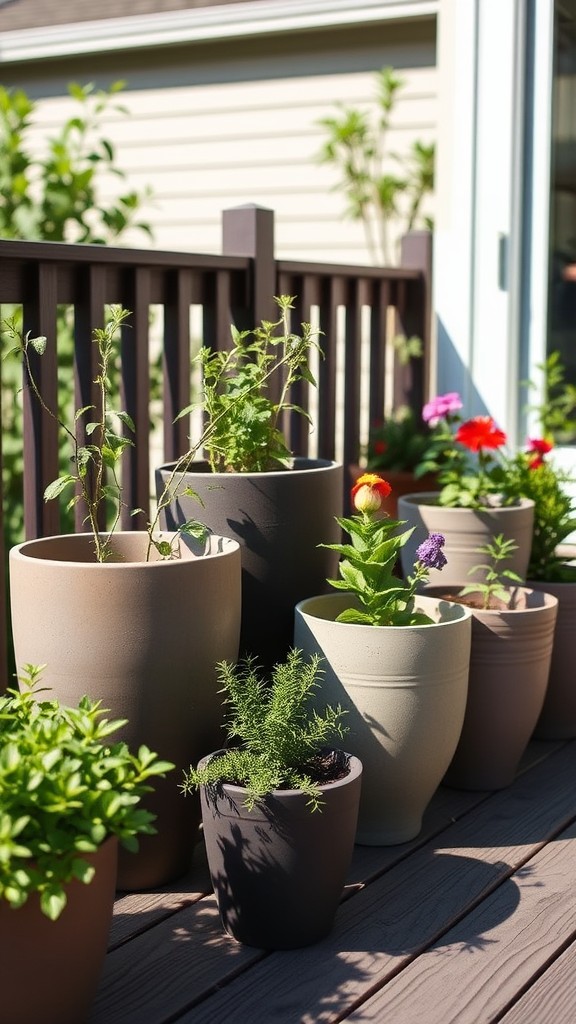
You can easily create a thriving garden by using container gardening. This technique allows you to grow a variety of plants in versatile pots, making it perfect for small spaces like balconies or patios. Choose containers that suit your style—terracotta, ceramic, or even recycled materials can work wonders.
Focus on selecting the right soil for your plants. A quality potting mix that includes nutrients and drainage is essential. Also, ensure that your containers have proper drainage holes to prevent root rot. To enhance your indoor or outdoor space, you might plant herbs like basil and mint, colorful flowers such as petunias or marigolds, or even vegetables like cherry tomatoes and lettuce.
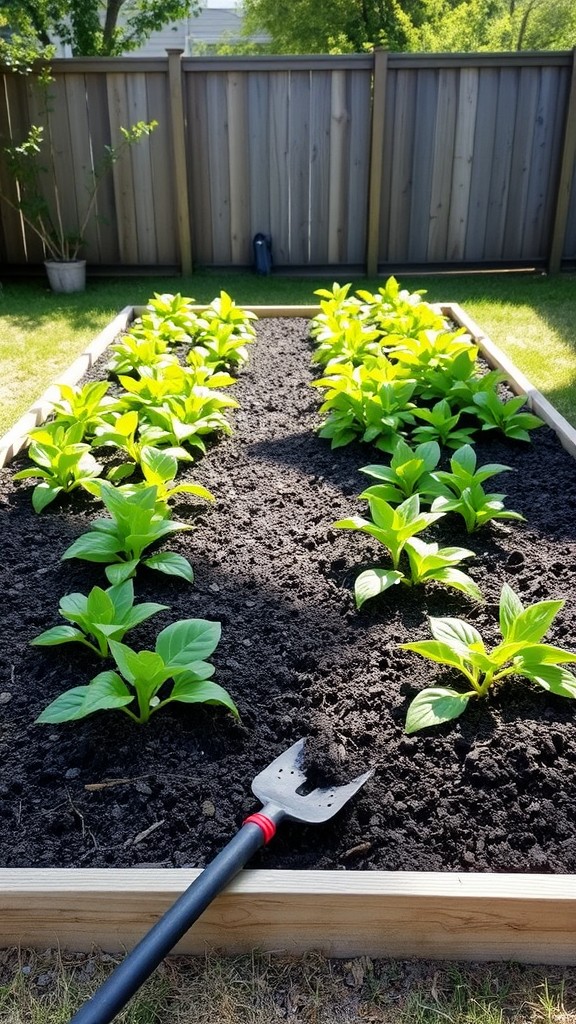
Create your in-ground garden beds by choosing a sunny spot in your yard that gets at least 6-8 hours of sunlight daily. Start by marking the bed’s dimensions—typically, 4 feet wide is ideal for easy access without stepping on the soil.
Prepare the soil by removing weeds, rocks, and debris, then enrich it with compost or well-rotted manure to promote healthy plant growth. Consider creating pathways between multiple beds using wood chips or gravel to keep your garden accessible and tidy.
Select a mix of annuals and perennials for year-round blooms and harvests. Companions like basil and tomatoes or carrots and onions promote healthy growth and can deter pests naturally. Don’t forget to install a drip irrigation system or set up a soaker hose to keep your plants hydrated efficiently!
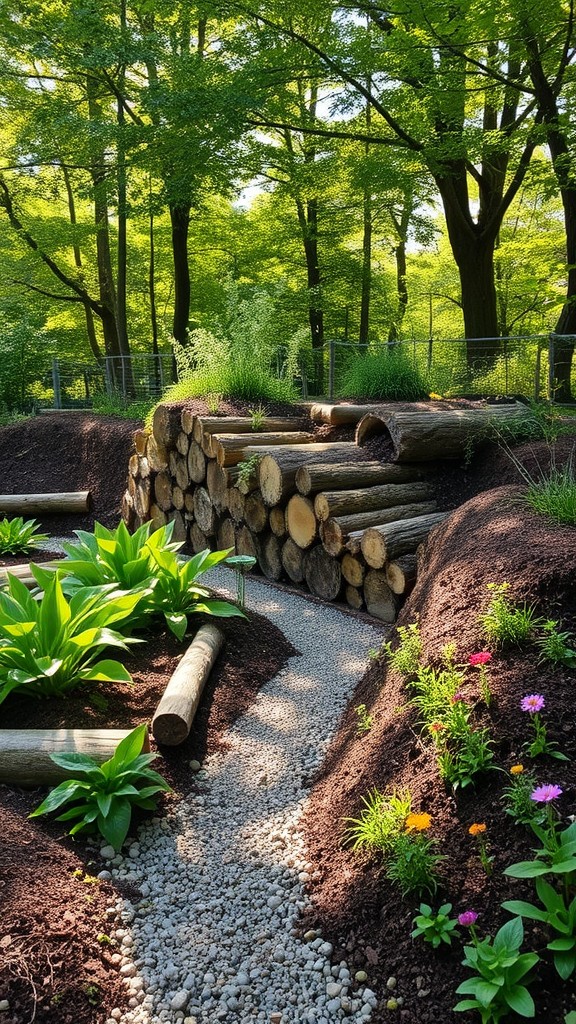
Hugelkultur gardening is an innovative technique that transforms yard waste into fertile growing spaces. Start by piling decaying logs, branches, and an assortment of organic materials like leaves and grass clippings. This layered structure not only decomposes over time, releasing nutrients but also creates excellent drainage.
Once your mound is ready, cover it with a mix of topsoil and compost to kickstart plant growth. Ideal plants for a Hugelkultur garden include deep-rooted vegetables like tomatoes and carrots, as well as perennials that benefit from the moisture-retaining properties. Remember to water regularly until your plants get established, leveraging this sustainable growing method for a bountiful harvest!
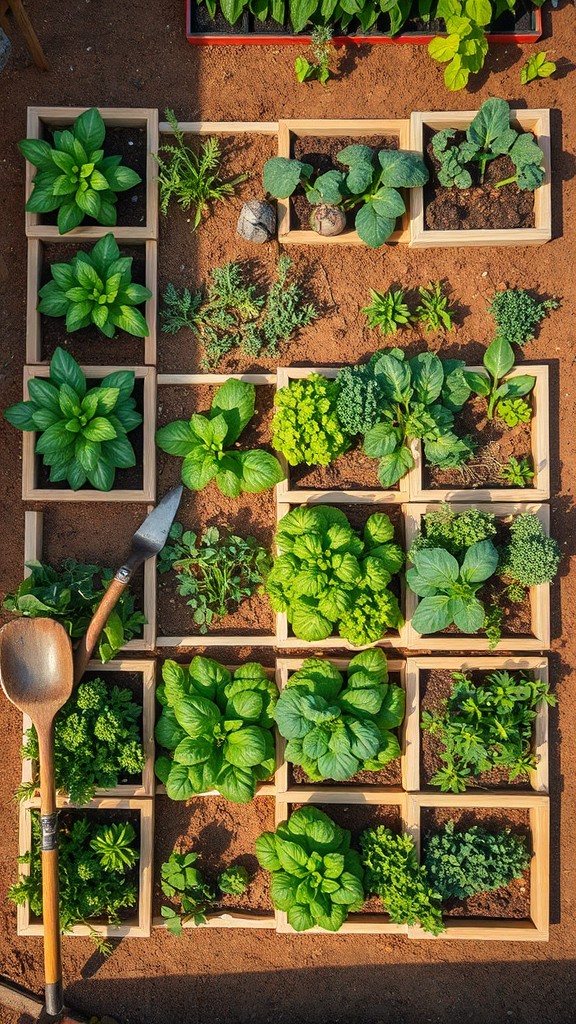
Square Foot Gardening is an excellent method to maximize your garden space while minimizing weeds and pests. Divide your garden bed into square sections, typically 1-foot by 1-foot. This approach allows you to plant a variety of crops in a compact area, making it perfect for urban gardeners.
You can grow different plants in each square, such as herbs, salad greens, or even carrots. For instance, one square could hold 16 radishes, while another accommodates just one large tomato plant. This method not only optimizes space but also enhances your gardening organization, sparking joy as you see various crops flourishing side by side.
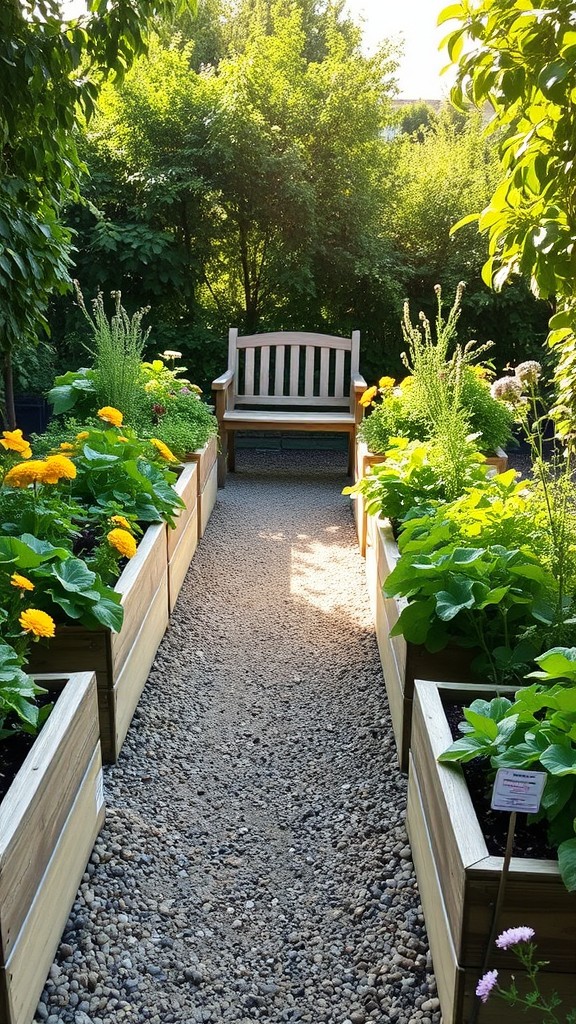
A potager garden combines beauty and function, allowing you to grow vegetables, herbs, and flowers in a cohesive layout. This type of garden thrives on the idea of intermixing edible plants with ornamental ones, creating a visually appealing space that invites both utility and enjoyment.
To design your potager, consider using raised beds or containers for organized planting. Arrange your crops in geometric patterns, ensuring taller plants don’t shade shorter ones. Opt for companion planting, such as tomatoes with basil or carrots with onions, which promote growth while helping to deter pests. Enhancing your potager with paths made of gravel or pavers will provide easy access and add charm to the garden.

You can create a xeriscape garden to conserve water while still enjoying a beautiful landscape. Focus on using drought-resistant plants that thrive in your climate. Consider varieties like lavender, agave, or sedum; these not only require less water but also provide stunning visuals.
To maximize efficiency, group plants with similar water needs together. Use mulch around your plants to retain moisture and suppress weeds. Incorporate drip irrigation systems to water deeper into the soil without wastage. This garden style is not only eco-friendly but also reduces maintenance time and costs.
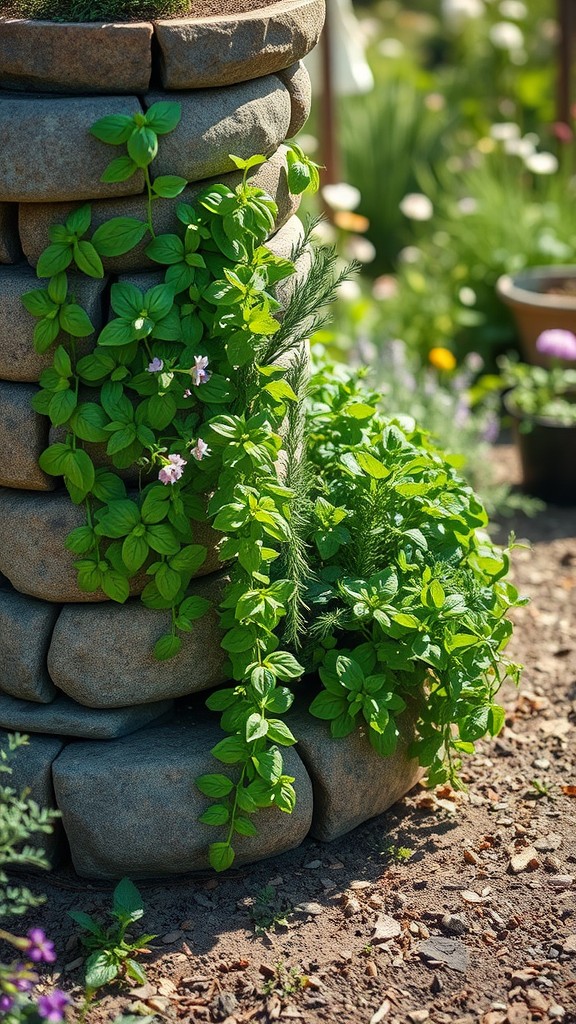
Creating a herb spiral is a fantastic way to maximize small garden spaces while providing a variety of herbs all at your fingertips. This vertical structure allows you to grow herbs that thrive in different conditions—conditions that can range from dry to moist.
Start by choosing a sunny spot in your garden, then construct a spiral using stones or bricks. The outer edges of the spiral can feature herbs like thyme and rosemary that prefer drier soil, while the inner core is perfect for moisture-loving herbs like basil and mint. This design not only saves space but also creates an eye-catching focal point in your garden.
To maintain your herb spiral, ensure you’re regularly watering the inner plants without over-saturating the outer ones. You can also introduce a drip irrigation system for ease of care. Enjoy the beauty of a productive herb spiral that enhances both your garden and your meals!
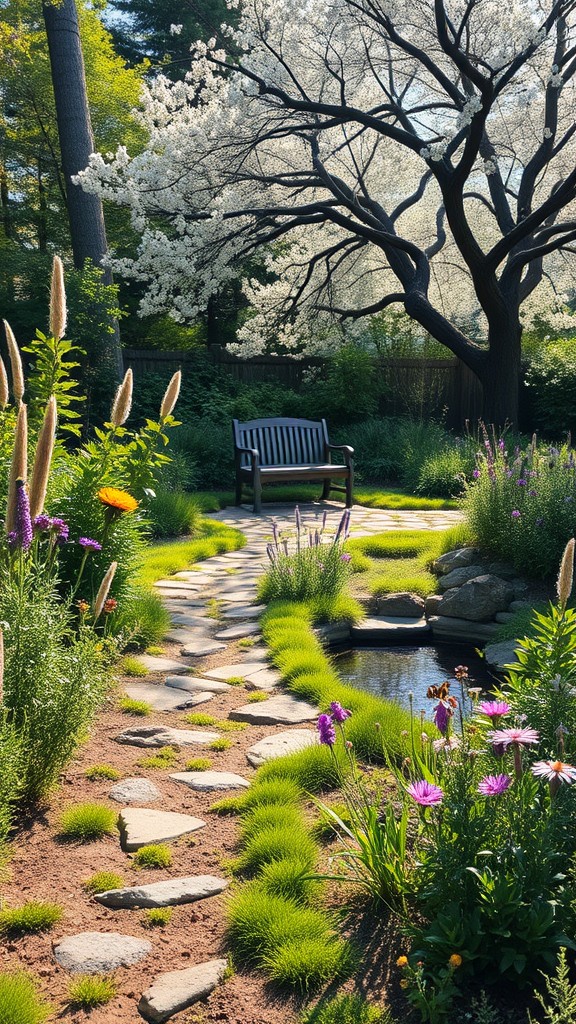
Creating a wildlife garden is a fantastic way to support local ecosystems while enjoying nature’s beauty. Start by planting a variety of native flowers, shrubs, and trees that provide food and shelter for birds, bees, and butterflies. Sunflowers, lavender, and milkweed are excellent choices.
Next, incorporate different habitats like a small pond, rock piles, or brush heaps. These areas attract diverse wildlife and enrich your garden’s biodiversity. You can also hang bird feeders or install nest boxes to invite feathered friends. Remember, maintaining a chemical-free environment is key; opt for natural pest control methods to keep your garden thriving!
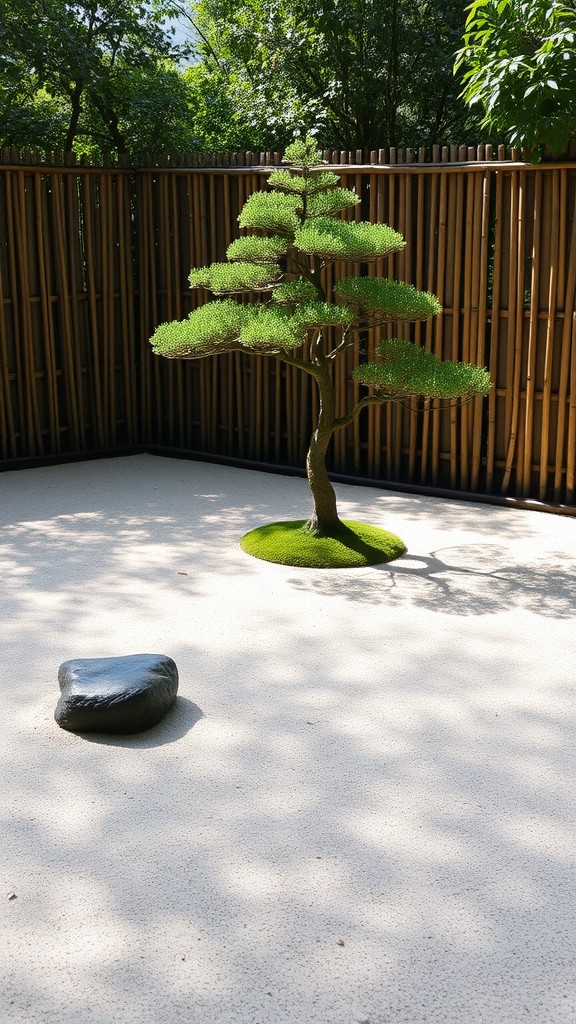
You can create a Japanese Zen Garden to cultivate peace and mindfulness in your outdoor space. Focus on using simple elements such as rocks, gravel, sand, and carefully placed plants. The idea is to mimic natural landscapes while maintaining a sense of balance and tranquility.
Start with a layer of gravel as your base, then rake it into flowing patterns to represent water. Add strategically placed rocks to symbolize mountains and islands. Choose plants like moss, bamboo, or Japanese maples to provide greenery, but keep them minimal to preserve the garden’s serene aesthetic. This layout not only enhances visual appeal but also encourages meditation and relaxation.
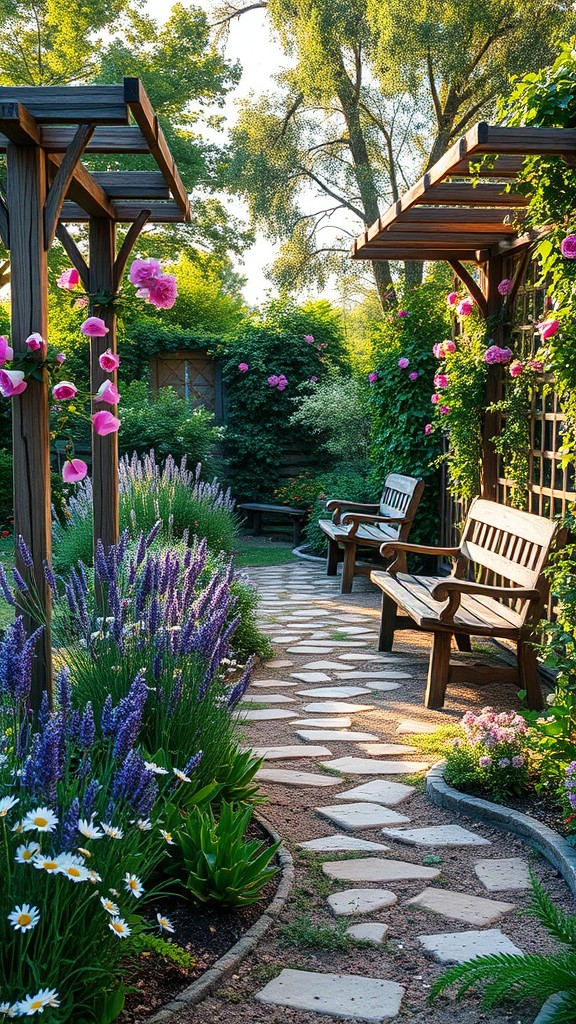
A Cottage Garden radiates charm and a sense of whimsy, making it perfect for those who love vibrant blooms. To create your own cozy retreat, focus on planting perennials, annuals, and herbs in a seemingly random, yet harmonious arrangement. Choose flowers like sweet peas, delphiniums, and hollyhocks for height and color variation.
Incorporate rustic elements such as wooden trellises, arched gates, and gravel paths to enhance the quaint vibe. Add densely planted containers with herbs like thyme and basil to provide both beauty and utility. Don’t forget to leave some space for wildflowers—these will attract beneficial insects and pollinators, enriching your garden ecosystem.
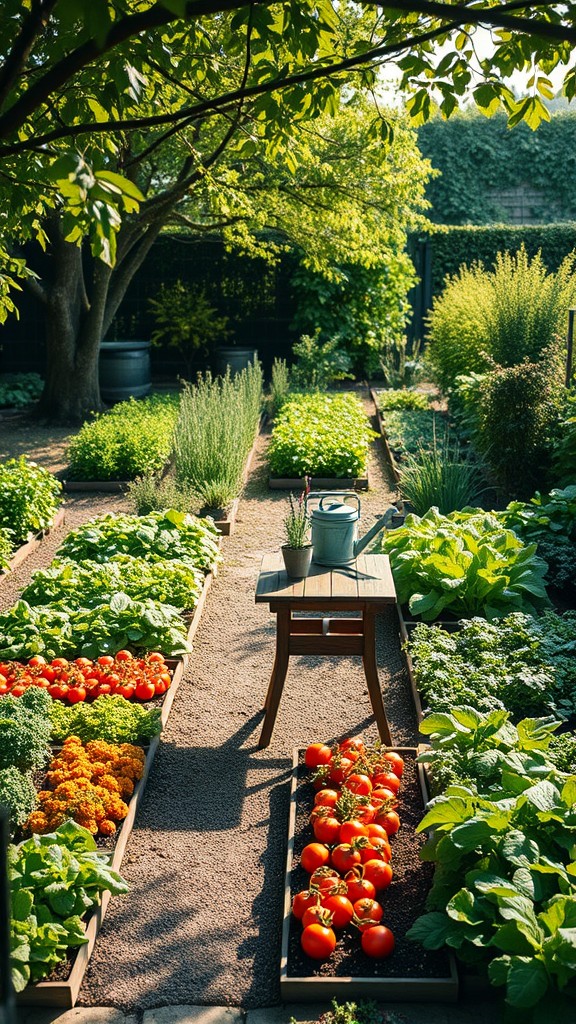
You can transform your garden into an edible landscape by choosing plants that are both beautiful and productive. Mix ornamental plants with edible varieties to create a visually appealing space that yields delicious rewards. For instance, consider using berry bushes like blueberries or raspberries interspersed with flowering shrubs.
Select herbs as border plants or ground cover; they not only add greenery but also offer culinary value. Thyme, oregano, and marigolds make excellent companions, attracting beneficial insects while providing fresh flavors for your dishes.
Planning is key—create dedicated zones for stacking or layering plants. Grow vertical gardens with climbing plants like peas or cucumbers along a trellis, enhancing beauty while maximizing space. This approach ensures your garden is both functional and lovely!
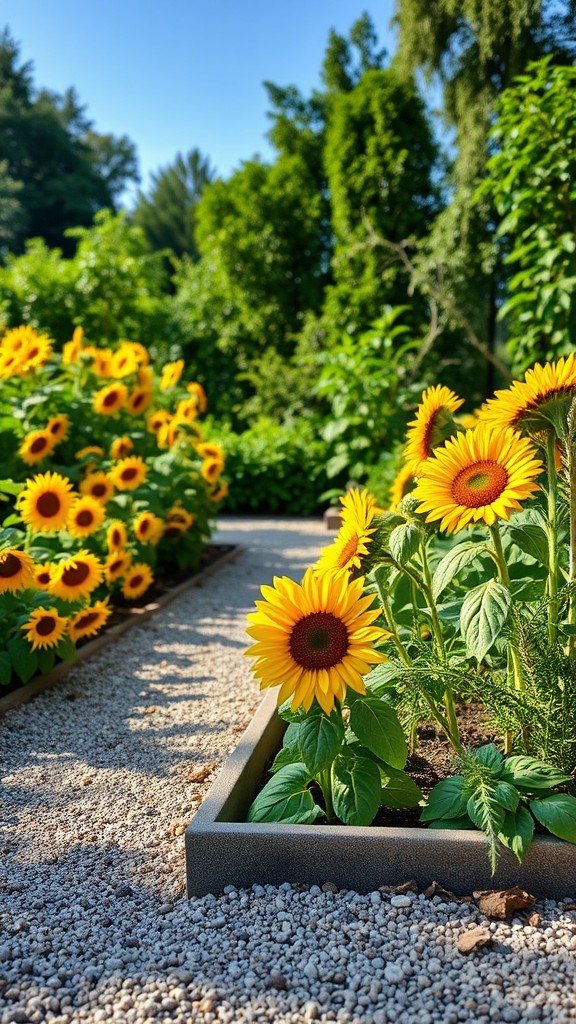
You can create a Sun Garden by choosing a spot that receives at least 6-8 hours of sunlight each day. This layout is perfect for plants that thrive in bright conditions, such as tomatoes, peppers, basil, and sunflowers.
To maximize your space, consider using raised beds or containers. This allows for better drainage and soil quality. Arrange taller plants on the north side to avoid shading shorter ones. Use mulch to retain moisture and suppress weeds, ensuring your sun-loving plants flourish.
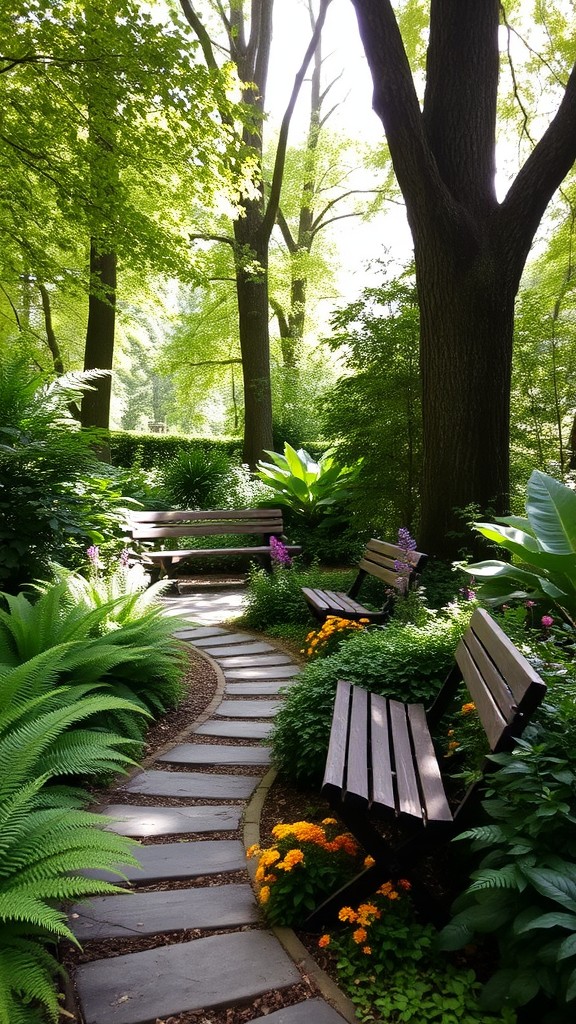
Creating a shade garden can transform underutilized areas into beautiful retreats. Choose plants that thrive in low-light conditions, such as hostas, ferns, and astilbes. These plants not only add texture but also create a lush, vibrant atmosphere.
Layer your planting to add depth. Position taller plants like Japanese maples at the back and shorter species in front. Consider incorporating decorative rocks or mulch to enhance drainage and maintain moisture. A small water feature can further add tranquility, attracting birds and beneficial insects to your shady sanctuary.
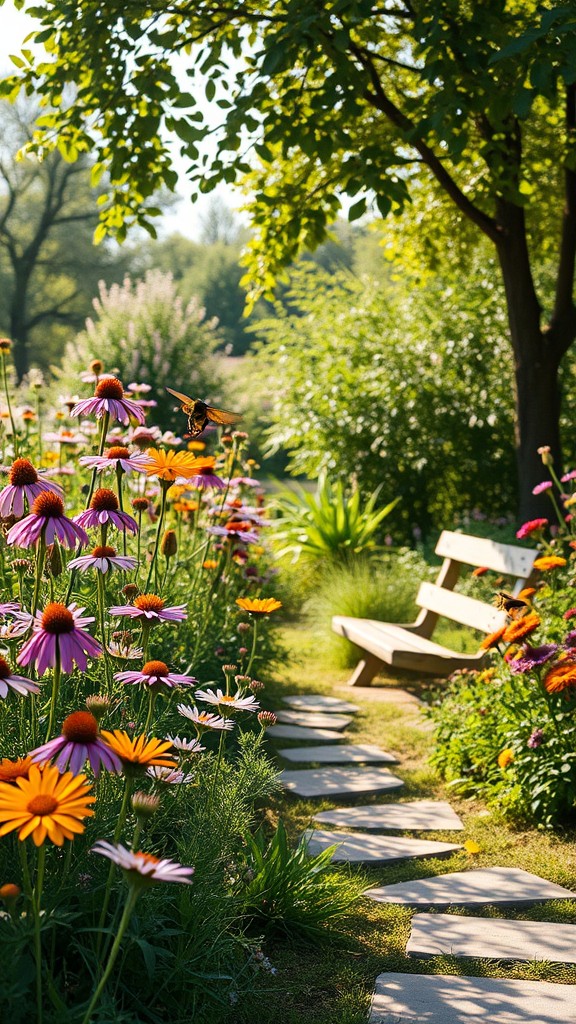
Creating a pollinator garden can greatly enhance your backyard’s biodiversity while supporting essential insects like bees, butterflies, and hummingbirds. Start by selecting a mix of native flowering plants that bloom at different times throughout the growing season, ensuring a reliable food source for pollinators.
Consider including plants such as coneflowers, milkweed, and black-eyed Susans. It’s also beneficial to add diverse flower shapes and colors, attracting a wide variety of pollinators. Remember to leave some areas of bare soil for ground-nesting bees and avoid using pesticides to keep your garden healthy.
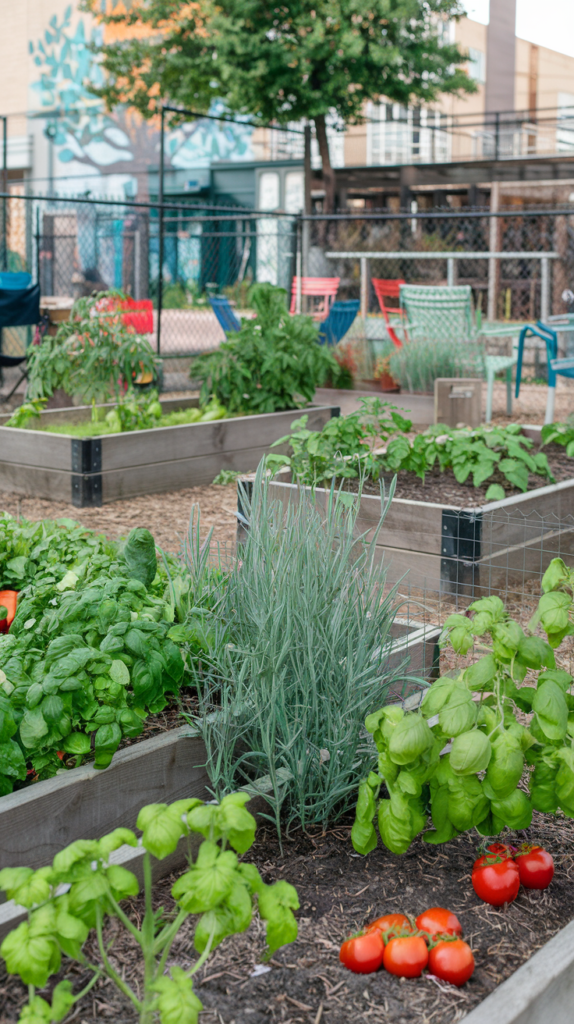
A community garden not only promotes sustainable gardening but also encourages neighborly connections. To start, gather interested locals and pick a centralized location. Make sure it has access to sunlight, water, and good soil. Defining clear boundaries with raised beds or fences will help manage your shared space effectively.
Plan what to grow together. Opt for easy-to-cultivate plants such as tomatoes, peppers, and herbs like basil. Each member can choose their favorite crops, ensuring a variety and maximizing space. Don’t forget to establish a schedule for watering and maintenance, allowing everyone to contribute based on their availability.
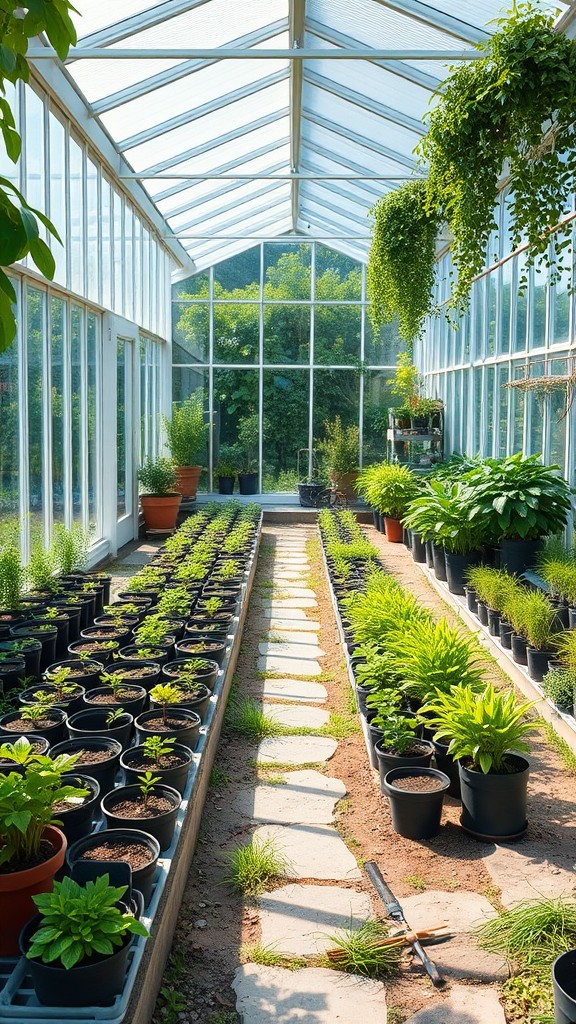
Creating a greenhouse garden is an excellent way to extend your growing season and protect delicate plants from harsh weather. A well-organized greenhouse can yield fresh produce year-round. Consider investing in temperature control systems to maintain optimal growing conditions.
You can maximize space by utilizing vertical gardening techniques. Hang planters or install shelving for smaller pots to save ground space and increase your plant variety. Opt for a mix of herbs, vegetables, and flowers—such as tomatoes, basil, and marigolds— to create a diverse and productive ecosystem inside your greenhouse.
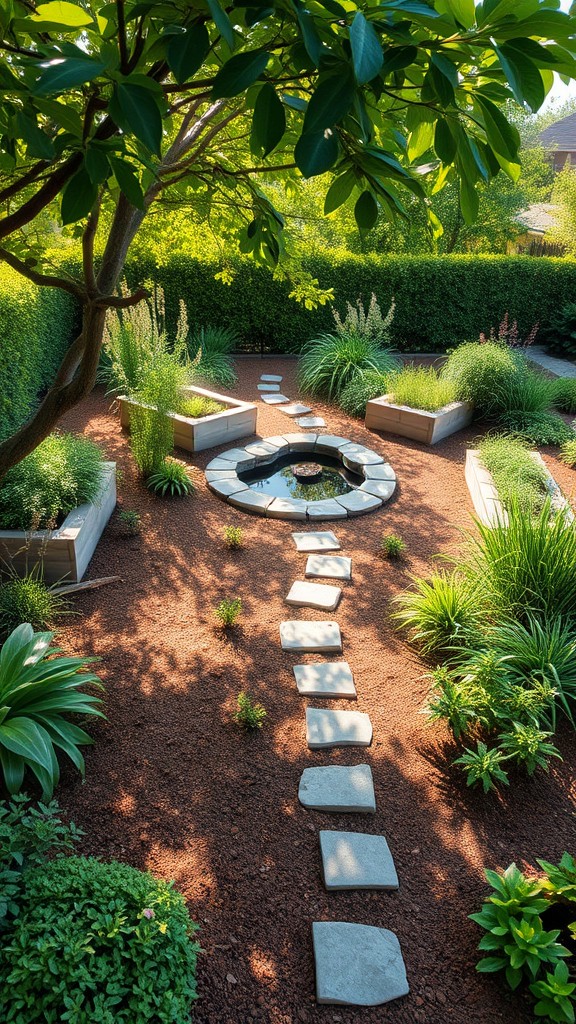
You can transform your garden into a thriving ecosystem by using permaculture design principles. This approach focuses on working with nature instead of against it and promotes sustainability. Start by observing the natural landscape and identifying areas where plants can flourish, such as sun exposure and water availability.
Use zones to plan your garden layout effectively. Place frequent-use plants like herbs and salad greens closer to your home for easy access. Consider creating a guildguild, where plants support each other. For example, plant nitrogen-fixing legumes near fruit trees to enhance soil quality.
Incorporate pollinator-friendly plants to attract beneficial insects, which help with pollination and pest control. Opt for a variety of perennial crops that require less maintenance over time and create a landscape that’s both productive and beautiful.